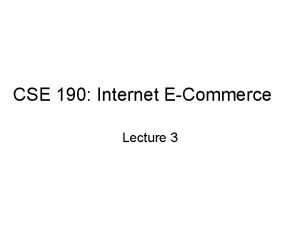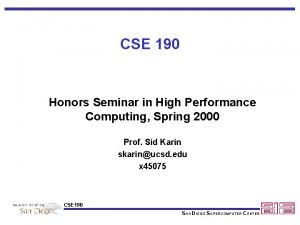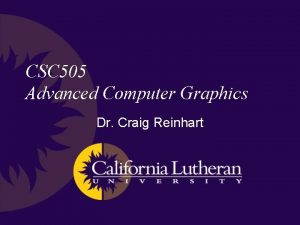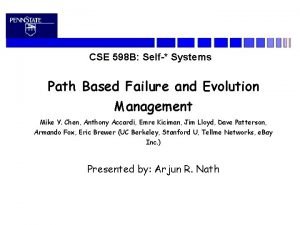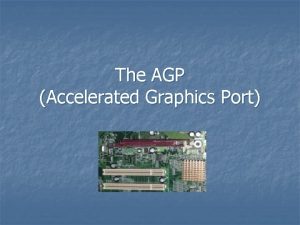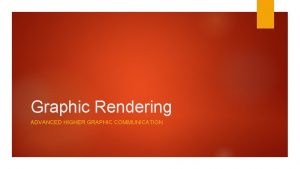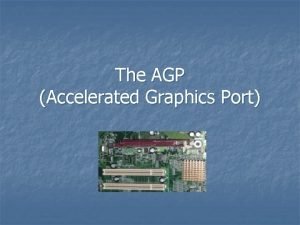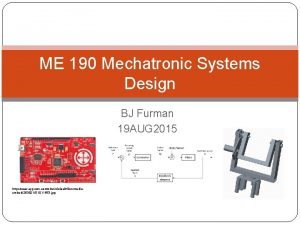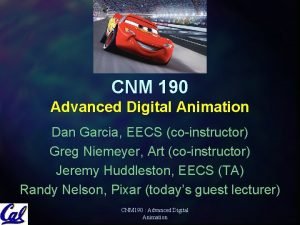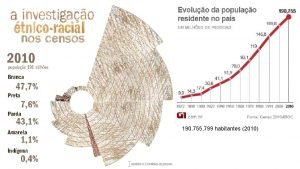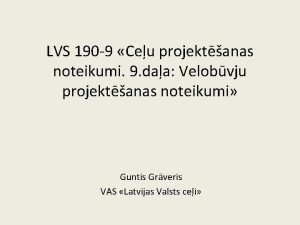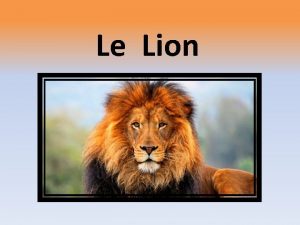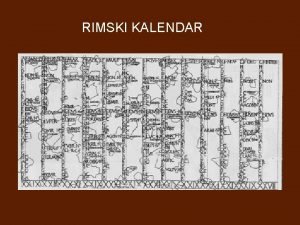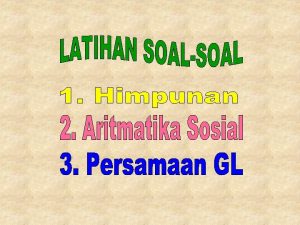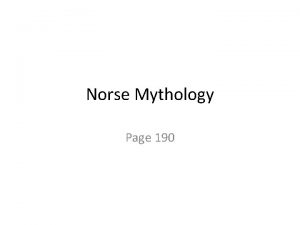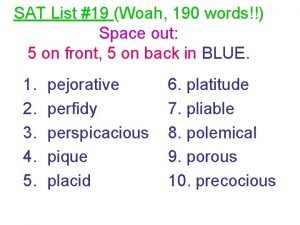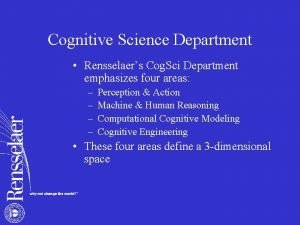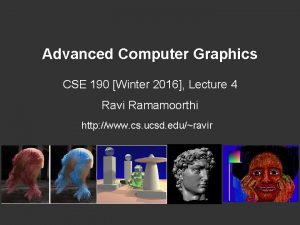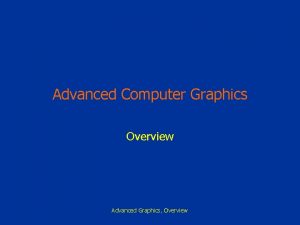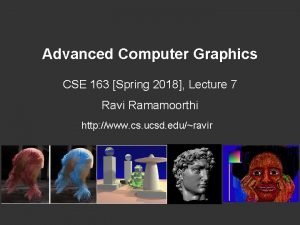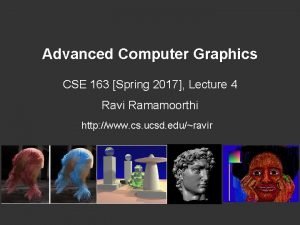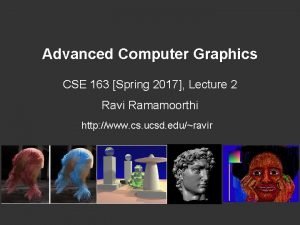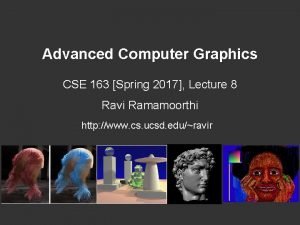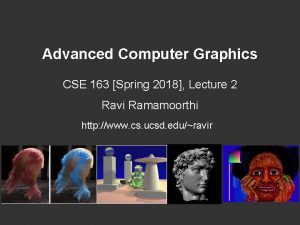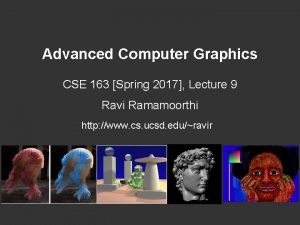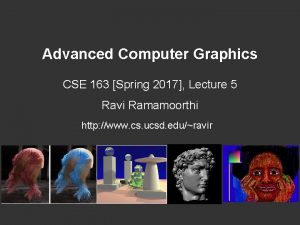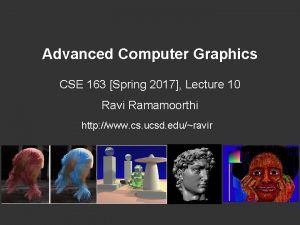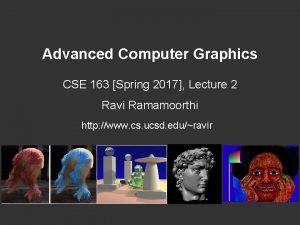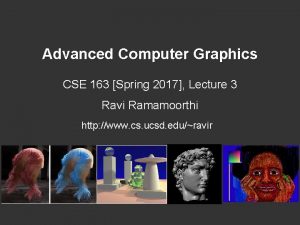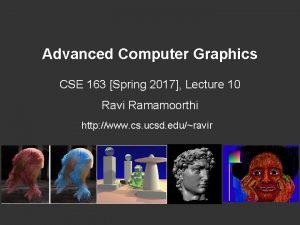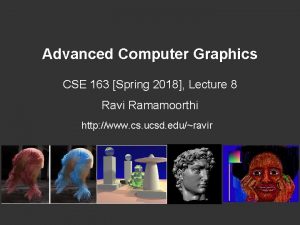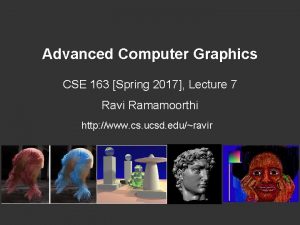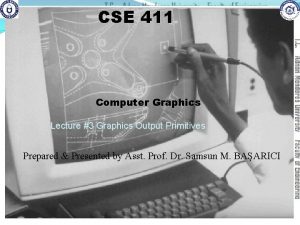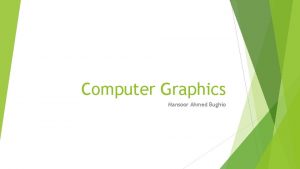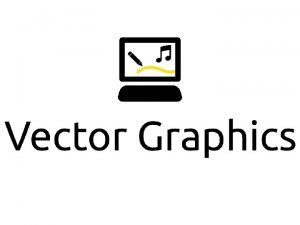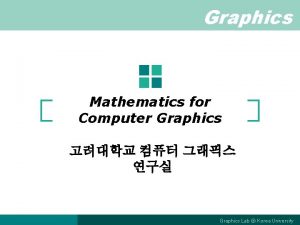Advanced Computer Graphics CSE 190 Spring 2015 Lecture
![Advanced Computer Graphics CSE 190 [Spring 2015], Lecture 2 Ravi Ramamoorthi http: //www. cs. Advanced Computer Graphics CSE 190 [Spring 2015], Lecture 2 Ravi Ramamoorthi http: //www. cs.](https://slidetodoc.com/presentation_image_h2/db7b5f982eabc1444e227ee737c2e12b/image-1.jpg)




























- Slides: 29
![Advanced Computer Graphics CSE 190 Spring 2015 Lecture 2 Ravi Ramamoorthi http www cs Advanced Computer Graphics CSE 190 [Spring 2015], Lecture 2 Ravi Ramamoorthi http: //www. cs.](https://slidetodoc.com/presentation_image_h2/db7b5f982eabc1444e227ee737c2e12b/image-1.jpg)
Advanced Computer Graphics CSE 190 [Spring 2015], Lecture 2 Ravi Ramamoorthi http: //www. cs. ucsd. edu/~ravir

Course Outline § 3 D Graphics Pipeline Modeling (Creating 3 D Geometry) Rendering (Creating, shading images from geometry, lighting, materials)

Course Outline § 3 D Graphics Pipeline Modeling (Creating 3 D Geometry) Rendering (Creating, shading images from geometry, lighting, materials) Unit 1: Foundations of Signal and Image Processing Understanding the way 2 D images are formed and displayed, the important concepts and algorithms, and to build an image processing utility like Photoshop Weeks 1 – 3. Assignment 1

To Do § Assignment 1, Due Apr 24. § § § Anyone need help finding partners? Should already have downloaded code, skimmed assn After today, enough to finish 3. 2, 3. 3 (first half) Should START EARLY (this week) on assn Second half next week.

Outline § Intensity and Color (briefly) § Basic operations (3. 2 in assignment [10 points]) § Quantization, Halftoning and Dithering § (3. 3 in assignment [10 points]) § Next week: Sampling and Reconstruction § Including signal processing and fourier analysis § Implementation of simple digital filters, resizing § Second half of assignment § Lectures main source; will also try handout

Intensities: Human Perception § Human eye can perceive wide range of intensities § Dimly lit darkened room to bright sunlight § Radiance ratio in these cases is a million to one or more § How does it work? [image only 256 gray levels] § Nonlinear human response § Care about ratio of intensities (log scale). So jump from 0. 1 to 0. 11 as important as 0. 50 to 0. 55 (not. 5 to. 51) § E. g. : cycle through 50 W, 100 W, 150 W (step from 50 to 100 much greater than from 100 to 150) § Technically, equispaced intensities multiplicative § 0. 02, 0. 0203, 0. 0206, … 0. 9848, 1. 000 [for 100 values] § Area of CG known as tonemapping (we ignore)

Gamma Correction § Website: http: //graphics. stanford. edu/gamma. html § Practical problem: Images look too dark/bright…

Gamma Correction § Monitors were CRT displays with nonlinear resp. γ=2. 5+ § NTSC, use 2. 2 (camera pre-corrected) § Rendering linear (physical space) Gamma Correct Watt Page 440

Example § Say RGB is something like (1, 0. 5, 0) § Values of 1 and 0 don’t change (black, white, primary colors unaffected by gamma correction) § Value of. 5 becomes. 707 (power of ½, gamma = 2) § Final color is (1, 0. 707, 0) [brighter, less saturated]

Color § Already seen: RGB model (color cube) § Today: A very brief overview of real story § Intuitive specify: Hue, Saturation, Lightness § Hexacone § Can convert HSV to RGB § Many other fancy, perceptual spaces

Color: Tristimulus Theory § Perception: Tri-stimulus theory § § § 3 types of cones: basis for RGB Cone response functions Luminous efficiency (G>R>B) Color matching: Note “negative colors” CIE overview Cone response Luminous efficiency Color Matching Match w CIE primaries

Basic Image Processing (HW 1: 3. 2) § Brightness: Simply scale pixel RGB values (1 leaves image intact, 0 makes it black) 0. 1 0. 4 0. 7 1. 0 § Gamma Correction § Crop (integer coords) to focus on important aspects

Basic Image Processing (HW 1: 3. 2) § Contrast [0 is constant grey image, 1 is original] § Find constant grey image by averaging § Interpolate between this and original -0. 5 0 0. 5 1. 0 2. 0

Basic Image Processing (HW 1: 3. 2) § Saturation [0 is greyscale, 1 is original colors] § Interpolate between grayscale (but not const) and orig. § Negative values correspond to inverting hues [negative] -1. 0 0. 5 1. 0 2. 0

Outline § Intensity and Color (briefly) § Basic operations (3. 2 in assignment [10 points] § Quantization, Halftoning and Dithering § (3. 3 in assignment [10 points]) § Next week: Sampling and Reconstruction § Including signal processing and fourier analysis § Implementation of simple digital filters, resizing § Second half of assignment (and written part)

Images and Resolution § Image is a 2 D rectilinear discrete array of samples § There are resolution issues: § Intensity resolution: Each pixel has only Depth bits § Spatial resolution: Image is only width*height pixels § Temporal resolution: Monitor refreshes only at some rate NTSC 640 x 480 8 bits 30 Hz PC 1280 x 1024 24 bits RGB 75 Hz Film 3000 x 2000 12 bits 24 Hz Laser Printer 7000 x 2000 1 (on or off) Some material for slides courtesy Greg Humphreys and Tom Funkhouser

Sources of Error or Artifacts § Quantization: Not enough intensity resolution (bits) Halftoning/dithering: Reduce visual artifacts due to quantization § Spatial and Temporal Aliasing: not enough resolution Sampling and reconstruction to reduce visual artifacts due to aliasing (next week)

Uniform Quantization 1 bit 8 bits 2 bits: NOTE CONTOURS 4 bits

Uniform Quantization 2 bits: NOTE CONTOURS

Reducing Quantization § Halftoning § Dithering § Random Dither § Error Diffusion (Floyd-Steinberg)

Halftoning § Motivation: bilevel printing. Trade off spatial resolution for more intensity levels § Dots of appropriate size to simulate grey levels § Area of dots proportional intensity

Halftone Patterns § Cluster of dots (pixels) to represent intensity (trading spatial resolution for increased intensity resolution) § Exploits spatial integration in eye

Reducing Quantization § Halftoning § Dithering (distribute errors among pixels) § Random Dither § Error Diffusion (Floyd-Steinberg)

Dithering 8 bits original 2 bits quantize: Note Contours 2 bits FLOYD STEINBERG 2 bits random dither: noise not contours

Random Dither § Randomize quantization errors [see assignment for exact details on adding random noise] § Seems silly (add random noise), but eye more tolerant of high-frequency noise than contours or aliasing § More complex algorithms (not considered here) are ordered dither with patterns of thresholds rather than completely random noise

Random Dither Image and example courtesy Tom Funkhouser

Error Diffusion § Spread quantization error to neighboring pixels to the right and below (later in the process) § Reduces net error, gives best results 7/16 3/16 5/16 1/16

Floyd Steinberg Results

Quantization (Sec 3. 3 Ass 1) § Simple quantization (should be straightforward) § Random Dither (just add noise, pretty simple) § Floyd-Steinberg (trickiest) § Must implement a diffusion of error to other pixels (simply add in appropriate error to them) § Uses fractions, so must use floating point § And possibly negative numbers since error can be minus § Boundary conditions (what if no right etc. ) toroidal or change weights appropriately, but don’t darken boundaries
 Cse 190
Cse 190 Telescience museum
Telescience museum Advanced computer graphics
Advanced computer graphics Graphic monitor and workstation in computer graphics
Graphic monitor and workstation in computer graphics Lcd working principle ppt
Lcd working principle ppt Spring break 2015
Spring break 2015 01:640:244 lecture notes - lecture 15: plat, idah, farad
01:640:244 lecture notes - lecture 15: plat, idah, farad Kim ki duk summer fall winter spring
Kim ki duk summer fall winter spring What months are spring summer autumn and winter
What months are spring summer autumn and winter Cse 598 advanced software analysis and design
Cse 598 advanced software analysis and design Advanced inorganic chemistry lecture notes
Advanced inorganic chemistry lecture notes Ranura agp
Ranura agp Advanced higher graphic communication
Advanced higher graphic communication Advanced graphics port
Advanced graphics port W= fxd
W= fxd Me 190 sjsu
Me 190 sjsu Cnm 190
Cnm 190 10 % de 190 755 799
10 % de 190 755 799 Ar 190-45
Ar 190-45 Mk noteikumi 190
Mk noteikumi 190 Lion poids 130 kg
Lion poids 130 kg Gefma richtlinie 190
Gefma richtlinie 190 Svi rimski brojevi
Svi rimski brojevi Adva 190
Adva 190 S=bilangan asli
S=bilangan asli Vertical
Vertical Ginnungagap
Ginnungagap 190 vauxhall bridge road mental health
190 vauxhall bridge road mental health 190 words
190 words Cogsci 190
Cogsci 190
